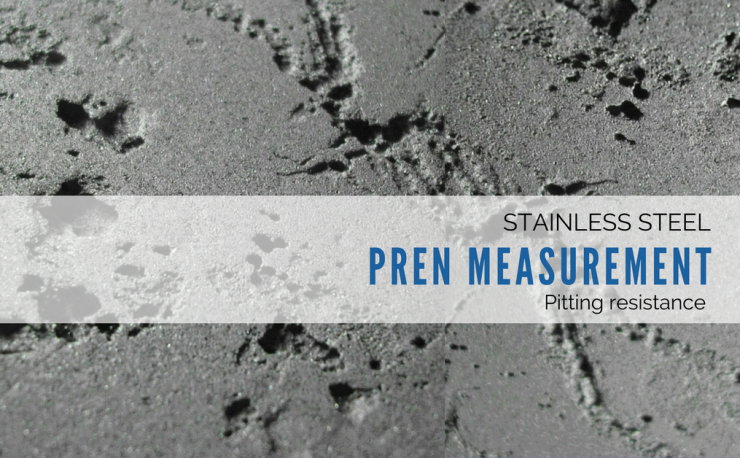
Pitting resistance equivalent number (PREN) is a predictive measurement of the pitting corrosion resistance of various types of stainless steel.
How to choose the most suitable steel?
For help in choosing the most suitable steel you can rely on numerical index PREN (Pitting Resistance Equivalent Number). The higher PREN-value, the more pitting corrosion resistant the steel. PREN alone is not an indicator of corrosion resistance. This index helps in choosing the most suitable steel but this to be checked anyway to check according to your terms of use. This index does not take into account either the temperature of the corrosive medium nor his concentration
Such as steel, you have to choose and why?
When designing is preferable to choosing steels with a passive film. Let’s see in particular:
- Austenitic steels: PREN = (%Cr) + 3.3 (%Mo) + 16 (%N)
- Ferritic steels: PREN = (%Cr) + 3.3 (%Mo)
- Duplex steels PREN = (%Cr) + 3.3 (%Mo) + 30 (%N)
But what are the values of PREN steels? Let’s review some:
- AISI 304L (austenitic) 18
- AISI 316L (austenitic) 24
What to avoid during the creation and use?
Now we have look how to proceed when designing. But what do you do during the realization and utilization? For the first is crucial to prevent surface roughness and zones with the protective layer compromise. And what to do specifically?
- Decontaminate surfaces from ferrous tracks
- Polish carefully the surface of prosthesis in contact with aggressive medium
- Use pastes to:
– mechanically remove the layer of metallic oxides that form on weld and heat affected zones (pickling pastes)
– restore the protective layer so as to ensure optimal oxygenation conditions during the process (passivating pastes)
- avoid heating the artifact within the critical range in welding processes. In fact, at that specific time is the precipitation of chromium carbide edges of the grains.
And if the corrosion phenomenon has triggered what should I do during use? Initially you will need to remove the pitted area (if that is possible), using mechanical means or abrasive suspensions. Only then you can proceed to the passivation of surface, thanks to specific passivating pastes.
Find our webshop.
Click on the link below to access on our web shop. You can choose the most suitable items to your customers needs.
Click here



There is a difference between serie 200 and serie 300. how can I denote this difference with PREN?
The 200 series is characterised by a very low nickel content. Its austenitic structure is maintained with manganese, a metal that is less susceptible to market fluctuations than nickel and therefore cheaper. The PREN, which stands for their resistance to pitting corrosion, is calculated mainly by taking into account the Chrome and Molybdenum content.
The 200 series steels do not contain Molybdenum and therefore have practically the same PREN index as austenitic steels without it, such as 304.
However, laboratory analyses have shown that 200-series steels are not as resistant to corrosion as 300-series steels of the same grade.
It is not a good idea to use PREN to highlight the difference between these two types of stainless steels, except in the case of austenitic steels containing molybdenum and therefore with a PREN index between 25 and 40 (e.g. AISI316).